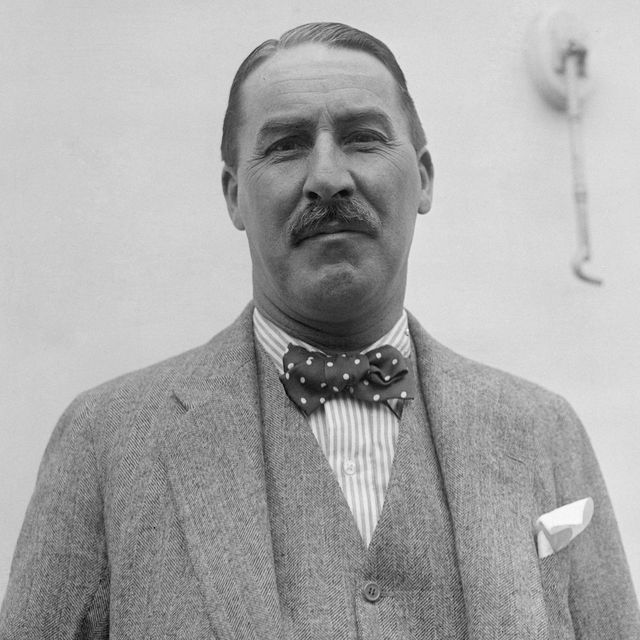1874-1939
Who Was Howard Carter?
Howard Carter first went to Egypt as a young artist hired to sketch artifacts. He went on to become an important archaeologist and the lead excavator of the tomb of King Tutankhamun. He found the Egyptian pharaoh’s sarcophagus in February 1923 after years of searching and more than three months of excavation. The discovery of King Tut’s tomb made a huge impact as one of the most well-preserved tombs of its kind, and Carter became an in-demand speaker throughout the United States. The British archaeologist died in 1939 at age 66.
Quick Facts
FULL NAME: Howard Carter
BORN: May 9, 1874
DIED: March 2, 1939
BIRTHPLACE: London, United Kingdom
ASTROLOGICAL SIGN: Taurus
Early Life
Howard Carter was born on May 9, 1874, in Kensington, London. His father, Samuel Carter, was a successful artist. Howard was a sickly child and was sent to live with his aunts in Norfolk. He had private home schooling and had an artistic streak from an early age. When his father painted a portrait of a well-known Egyptologist, the young Howard’s interest was sparked.
The British had occupied Egypt in the late 19th century. This period saw an increased European interest in Egyptology, the study of ancient Egypt. Many prominent British scientists and archaeologists were active in excavating ancient sites.
Archaeology
Through his father’s connections, Carter found a job working for an archaeologist who needed an artist to draw his findings. He headed to Egypt in 1891, at the age of 17, where he was to work on the Egypt Exploration Fund’s excavation of the Middle Kingdom tombs at Beni Hassan.
For the next several years, Carter worked under different archaeologists at sites including Amarna, Deir el-Bahari (sometimes spelled Dayr al-Bahri), Thebes, Edfu, and Abu Simbel. Carter earned praise for using innovative and modern new methods to draw wall reliefs and other findings.
In 1907, Carter was hired by wealthy English aristocrat Lord Carnarvon, who was fascinated by Egyptology. With Carnarvon’s backing, Carter led the excavation of Egyptian nobles’ tombs.
Discovery of King Tut’s Tomb
In 1914, Carnarvon received a license to dig at a site where it was believed the tomb of King Tutankhamun rested. Carnarvon gave the job to Carter. Carter hired a crew of workers to help find the tomb but was interrupted by World War I.
Following the war, Carter resumed his excavations, but after several years, Lord Carnarvon grew dissatisfied with the lack of results and informed Carter he had one more season of funding to find the tomb.
On November 4, 1922, a boy who worked as a water fetcher on the excavation started to dig in the sand with a stick. He found a stone step and called Carter over. Carter’s crew found a flight of steps that led down to a sealed door and a secret chamber. On November 26, 1922, Carter and Lord Carnarvon entered the tomb, where they found an immense collection of gold and treasures. On February 16, 1923, Carter opened the innermost chamber and found the sarcophagus of King Tut.
The discovery made a huge impact. King Tut’s tomb was by far the most intact of all the tombs that were excavated, and artifacts were well-preserved, including the sarcophagus and Tut’s mummy. An interest in ancient Egypt and Egyptology was sparked around the world, largely thanks to the uncovered tomb of Tutankhamun.
The immense wealth of artifacts and treasures found in King Tut’s tomb took decades to excavate. Carter remained in Egypt, working on the site, until the excavation was completed in 1932.
Later Years and Death
Carter returned to London and spent his later years working as a collector for various museums. He toured the United States, giving lectures about Egypt and King Tut, and contributing to Americans’ interest in ancient Egypt.
Carter died in London on March 2, 1939, of lymphoma. He was buried in Putney Vale Cemetery in London.
Fact Check: We strive for accuracy and fairness. If you see something that doesn't look right contact us!
The Biography.com staff is a team of people-obsessed and news-hungry editors with decades of collective experience. We have worked as daily newspaper reporters, major national magazine editors, and as editors-in-chief of regional media publications. Among our ranks are book authors and award-winning journalists. Our staff also works with freelance writers, researchers, and other contributors to produce the smart, compelling profiles and articles you see on our site. To meet the team, visit our About Us page: https://www.biography.com/about/a43602329/about-us












